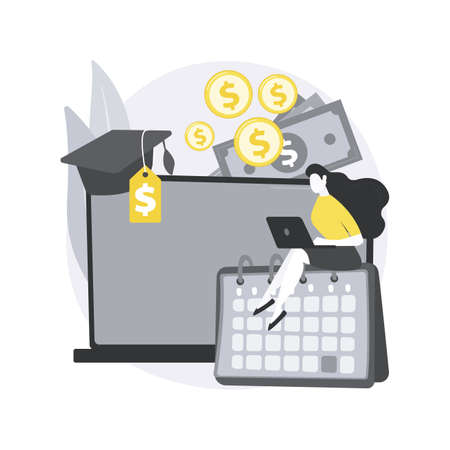Understanding Emergency Funds
When it comes to building a solid financial foundation in the United States, emergency funds play a crucial role. But what exactly are emergency funds, and why do they matter—especially if you’re focused on paying off debt? Let’s break down the basics in a way that’s easy to understand and practical for everyday life.
What Are Emergency Funds?
An emergency fund is simply a stash of money set aside specifically for unexpected expenses. Think of it as your financial safety net. Life happens—your car might break down, you could face an unexpected medical bill, or maybe you suddenly lose your job. Instead of relying on credit cards or loans, your emergency fund gives you quick access to cash when you need it most.
The Purpose of Emergency Funds
The main goal of an emergency fund is to protect you from financial setbacks that could derail your progress toward larger goals, like paying off debt. In the U.S., where medical costs and sudden unemployment can create real hardship, having an emergency fund is not just smart—it’s essential.
Key Purposes at a Glance
| Purpose | Examples |
|---|---|
| Unexpected Expenses | Car repairs, home fixes, urgent travel |
| Job Loss Protection | Covers bills while searching for new work |
| Avoiding New Debt | Pays for emergencies without using credit cards |
Why Emergency Funds Matter in the U.S.
American households often face unpredictable costs, and many people live paycheck to paycheck. Without an emergency fund, even a small surprise expense can lead to mounting debt. That’s why personal finance experts across the country recommend starting with an emergency fund—even before aggressively tackling debt. It provides peace of mind and keeps your financial plan on track, no matter what life throws your way.
2. Common Financial Shocks in America
When youre working hard to pay off debt, life can throw unexpected curveballs that disrupt your financial plans. In the U.S., certain surprise expenses happen more often than people might think, and they highlight why having an emergency fund is so important.
Typical Unexpected Expenses
Many Americans face sudden costs that can be tough to manage without savings. Here are some of the most common:
- Medical Bills: Even with health insurance, out-of-pocket costs for emergencies, surgeries, or unexpected illnesses can add up fast.
- Car Repairs: Since many Americans rely on their vehicles for commuting and daily life, a breakdown or accident can mean hundreds or even thousands of dollars in repairs.
- Job Loss: Layoffs and company closures happen across industries, sometimes without warning, leaving families scrambling to cover everyday expenses.
- Home Repairs: Essential systems like plumbing, heating, or roofing can fail unexpectedly, requiring immediate attention and funds.
- Family Emergencies: Sometimes, you may need to travel suddenly or support a loved one in crisis, which can bring unplanned costs.
The Frequency of Financial Shocks
A 2023 Federal Reserve survey found that nearly one in three Americans faced a major unexpected expense in the past year. Heres a quick look at how often these shocks occur:
| Type of Expense | % of Households Affected (Yearly) | Average Cost ($USD) |
|---|---|---|
| Medical Bills | 23% | $1,350 |
| Car Repairs | 27% | $500-$1,200 |
| Job Loss/Income Reduction | 15% | N/A (varies by situation) |
| Home Repairs | 18% | $1,200-$4,000 |
| Family Emergencies/Travel | 10% | $800-$2,000 |
The Ripple Effect on Debt Repayment Plans
If you don’t have emergency savings set aside, these sudden expenses can force you to use credit cards or take out new loans—making it harder to get out of debt. That’s why building an emergency fund is a smart move: it protects your progress and keeps you from falling further behind when life gets unpredictable.

3. Why You Need an Emergency Fund While Paying Off Debt
When you’re focused on paying down debt, it might feel like every extra dollar should go toward your balances. However, in the U.S., financial experts strongly recommend keeping an emergency fund—even if you’re working hard to get out of debt. Here’s why this strategy makes sense for stability and peace of mind.
The Safety Net: Protecting Against Life’s Surprises
Unexpected expenses can pop up at any time—a medical bill, a car repair, or sudden job loss. Without an emergency fund, you may have no choice but to add more debt just to cover these costs. An emergency fund acts as a buffer, giving you financial breathing room so you don’t undo your progress.
Common Emergencies Americans Face
| Emergency Type | Estimated Cost (USD) |
|---|---|
| Car repair | $500–$1,200 |
| Medical expense | $300–$2,000+ |
| Home repair (e.g., plumbing) | $300–$1,500 |
| Job loss (one month’s living expenses) | $2,000–$4,000+ |
This table shows how quickly unexpected costs can add up. Having even $500 to $1,000 set aside can make a big difference.
Breaking the Debt Cycle
If you don’t have savings and an emergency strikes, you might use credit cards or personal loans to cover the expense. This creates a cycle where debt keeps growing, making it harder to reach your financial goals. An emergency fund helps break this pattern by letting you pay for surprises with cash instead of credit.
Emergency Fund vs. Debt Repayment: Finding Balance
| Action | Short-Term Impact | Long-Term Benefit |
|---|---|---|
| All money to debt | Debt drops faster, but no safety net | Risk going deeper into debt if emergencies happen |
| Maintain small emergency fund while paying debt | Pays off debt slightly slower | Greater financial security and stability |
This approach is commonly recommended by American financial advisors because it balances progress on debt with essential protection against setbacks.
Bottom Line: Security While Tackling Debt
An emergency fund isn’t about slowing down your debt repayment—it’s about making sure that one unexpected event doesn’t wipe out all your hard work. By following this U.S.-based financial planning norm, you’ll be better equipped to handle whatever comes your way while staying on track toward being debt-free.
4. How Much Should You Keep in Your Emergency Fund?
When youre working to pay off debt, figuring out the right amount to keep in your emergency fund can feel tricky. The classic advice is to save three to six months’ worth of living expenses, but your personal situation matters a lot—especially if you’re balancing debt payments and rising costs of living across different parts of the U.S.
Standard Emergency Fund Recommendations
Most financial experts agree on a general guideline:
- Minimum: 3 months of essential living expenses (rent/mortgage, utilities, groceries, transportation, insurance)
- Ideal: 6 months for extra security, especially if your job or income is unstable
Emergency Fund Size by Debt Scenario
| Debt Situation | Recommended Emergency Fund |
|---|---|
| No Debt / Low Debt | 6 months of expenses (More flexibility to build savings) |
| High-Interest Debt (e.g., credit cards) | 1-2 months of expenses (Focus on paying down high-interest debt faster, but don’t go without a safety net) |
| Stable Installment Debt (e.g., student loans, mortgages) | 3-6 months of expenses (Balance between saving and steady debt payments) |
Adjusting for Cost-of-Living Differences Across the U.S.
The cost of living varies a lot depending on where you live. Someone in San Francisco or New York will need a bigger emergency fund than someone in the Midwest or South. Here’s an example:
| Location Type | Monthly Essential Expenses Example | 6-Month Emergency Fund Target |
|---|---|---|
| High Cost (NYC, SF) | $4,500 | $27,000 |
| Moderate Cost (Austin, Denver) | $3,000 | $18,000 |
| Low Cost (Tulsa, Birmingham) | $2,000 | $12,000 |
Your Personal Equation: Income + Debt + Location = Fund Size
If you’re aggressively paying down high-interest debt, you might start with a smaller emergency fund—just enough to cover basic needs for a couple of months. Once those debts are under control, work toward expanding your safety net to cover more months. Always factor in your own job stability and family needs as well.
5. Balancing Debt Repayment and Emergency Savings
Finding the right balance between paying off debt and building an emergency fund is a common challenge for many Americans. Both goals are crucial: paying down debt reduces interest costs and financial stress, while emergency savings provide a safety net that helps you avoid more debt when unexpected expenses pop up.
Why Not Focus on Just One?
It might seem logical to throw every extra dollar at your debt or, on the flip side, save every penny for emergencies. However, focusing solely on one can leave you exposed. If you pay off debt aggressively but have no savings, an emergency could push you deeper into debt. On the other hand, saving too much without tackling high-interest debts means paying more in interest over time. A balanced approach gives you stability and progress.
Using Budgeting Frameworks
One popular method is the 50/30/20 rule, which divides your after-tax income as follows:
| Category | Percentage of Income | Description |
|---|---|---|
| Needs | 50% | Essentials like rent, utilities, groceries, insurance, minimum debt payments |
| Wants | 30% | Lifestyle choices such as dining out, hobbies, entertainment |
| Savings & Debt Repayment | 20% | Emergency fund contributions, extra debt payments, investments |
This rule is flexible. For those dealing with high-interest debt or who lack any emergency savings, you might consider tweaking the percentages—temporarily allocating a larger share of the 20% to emergency funds until you reach a $500–$1,000 cushion, then redirecting more toward aggressive debt repayment.
Practical Strategies to Allocate Your Income
- Start Small with Emergency Savings: Aim for an initial goal of $500–$1,000. This covers most minor emergencies and prevents new credit card charges.
- Make Minimum Debt Payments Mandatory: Always cover at least your minimums to avoid fees and credit damage.
- Split Extra Funds: After meeting your needs and minimum payments, divide any extra cash—such as tax refunds or bonuses—between emergency savings and additional debt payments.
- Automate Transfers: Set up automatic transfers to your savings account right after payday so you’re less tempted to spend what you plan to save.
- Reevaluate Regularly: As your situation changes (debt shrinks or savings grow), adjust how much goes to each goal. Revisit your budget every few months to stay on track.
A Sample Monthly Allocation (Based on $4,000 After-Tax Income)
| Category | Dollars Allocated |
|---|---|
| Needs (50%) | $2,000 |
| Wants (30%) | $1,200 |
| Savings & Debt Repayment (20%) – Emergency Fund – Extra Debt Payment |
$800 $400 $400 |
This approach allows you to make steady progress on both fronts—reducing your reliance on credit cards for emergencies while steadily chipping away at existing debt.
6. Smart Steps for Building or Replenishing Your Emergency Fund
Why It Matters While Paying Off Debt
Building an emergency fund while tackling debt may feel like walking a tightrope, but having even a small cash cushion can keep you from sliding back into deeper debt when unexpected expenses hit. In the U.S., where medical bills, car repairs, or a lost job can quickly destabilize your finances, a well-managed emergency fund is essential for maintaining progress on your debt payoff journey.
Actionable Tips to Grow Your Fund Without Derailing Debt Repayment
1. Set a Realistic Starter Goal
You don’t need a full 3-6 months of expenses right away. Aim for an initial target of $500 to $1,000—enough to cover most minor emergencies and reduce reliance on credit cards.
2. Automate Your Savings
Schedule automatic transfers to a separate savings account right after each paycheck hits. Even $10 or $20 per week adds up without much effort or temptation to spend.
3. Use Windfalls and Side Hustle Income
If you receive tax refunds, cash gifts, or income from gigs like DoorDash or selling on Facebook Marketplace, direct some (or all) of it straight into your emergency fund before using it elsewhere.
4. Cut Small Expenses Temporarily
Analyze your budget for short-term sacrifices—think skipping the daily coffee run or downgrading streaming services. These modest cutbacks can free up funds for emergencies without drastically changing your lifestyle.
| Expense Category | Monthly Savings Potential ($) | Suggested Action |
|---|---|---|
| Coffee Shop Visits | $40-$60 | Brew at home during weekdays |
| Streaming Subscriptions | $10-$30 | Pause or downgrade to basic plan |
| Dine-Out Meals | $50-$100 | Cook extra meals at home each week |
| Unused Memberships | $20-$40 | Cancel or freeze gym/club memberships temporarily |
5. Prioritize High-Interest Debt but Don’t Neglect Savings Entirely
If you’re paying down credit card balances with high interest rates, consider splitting extra payments—putting the majority toward debt but reserving a smaller portion for emergency savings until you reach your starter goal.
6. Keep Funds Accessible but Separate
Open a dedicated savings account (many online banks offer no-fee options with competitive interest rates). This keeps your emergency money out of sight and less tempting to dip into for non-emergencies.
Remember: Progress Is Still Progress
No matter how small each step feels, consistently building your emergency fund protects your financial stability and helps ensure that one surprise expense doesn’t undo all your hard work paying off debt.

